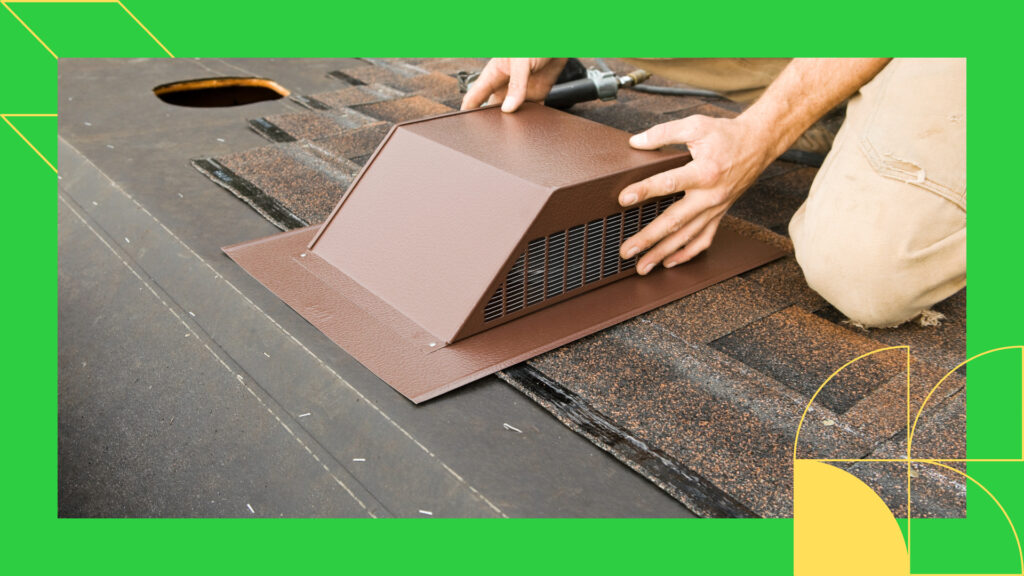9 Effective Ways to Amplify Your Home Comfort: Essential Types of House Roof Vents for Superior Energy Efficiency
Navigating the realm of residential roofing ventilation, including understanding house roof vents, might seem complex, yet it’s a critical aspect of maintaining an energy-efficient and comfortable home In the face of Central Florida’s persistent heat, relentless sun, and occasional storms, understanding the importance of roof vents is paramount.
House roof vents are one of the key aspects to keep in mind when installing, inspecting, or renovating your home’s roof. Central Florida’s local weather conditions include frequent sunshine, heat, rain, wind, thunderstorms, and even hurricanes. On intense humid summer nights, roof vents are critical in keeping the temperature inside of the building cool. The style, shape, and roof design, in general, will determine what is the correct combination of air intake at low points on the roof, and exhaust vents at high points. The ideal setup to establish efficient, year-round ventilation in the attic is a balanced system of intake and exhaust airflow.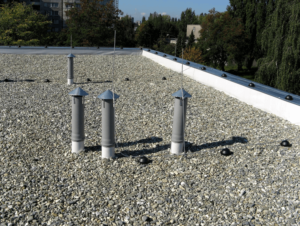
There are several options for choosing the proper house roof vent for your attic ventilation setup. As mentioned above, intake and exhaust models are the two most common types, and both are necessary for a roof to be adequately ventilated. There are static vents that don’t need any moving elements to function. These vents rely on air moving naturally, such as when temperature and pressure differences occur. In contrast, turbines and powered vents actively contribute to air circulation. They use a turbine to draw air up through the vent. Turbine vents are more suited for roof structures where much air movement needs to be produced.
1. Intake Vents: A Key Type of House Roof Vents
Intake vents play a pivotal role in creating a fresher, cooler environment within your home. They work by allowing cool air to enter the attic, subsequently displacing and expelling the hot air. These vents can be strategically positioned in various locations on the roof to optimize airflow. To maintain their effectiveness, it’s crucial to ensure they remain unobstructed by insulating material or overgrown vegetation. Moreover, the placement of intake vents also depends on the architectural design of your house, as different roof shapes and slopes may require varied placement strategies. Always consult with a roofing professional to ensure the proper installation and functionality of these crucial components in your home ventilation system.
2. Soffit Vents: Essential Airflow Points in Homes
A soffit is an aspect of any construction element, it’s the panel underneath the eaves of the house, and it can be seen on the interior or exterior of a building. Soffit vents are airflow openings in these panels of the home that let fresh air into the attic. Soffit comes in a variety of forms, but the majority of them feature tiny holes that let cold air enter your attic space. When the roof design allows it, homeowners and roofing professionals usually include soffit vents in their building blueprints. They are the most popular kind of intake vents. To ensure adequate ventilation, these vents are distributed throughout the house on the soffits.
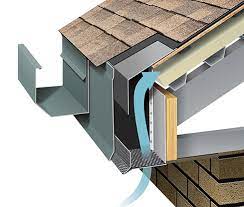
3. Over Fascia Vents: Discreet Yet Effective Air Entry
The siding over the soffit is called a fascia board. When you look at a roof overhang, the fascia is the exposed board you can see on the front of the structure, just next to the gutters. Over Fascia Vents offers a discreet yet highly effective eaves ventilation system, suitable for use on buildings with or without soffit overhangs. They are made from lightweight, extremely strong materials. Their grill size design is small enough to stop small rodents and other animals from entering the roof attic.
4. Gable Vents: Combining Intake and Exhaust Functionality
A gable vent is an older kind of house roof vent that can serve as both an intake and exhaust system. To improve the airflow through the attic space, gable vents utilize horizontal or cross-ventilation. The fundamental basic principle is that air enters the attic from one side and exits via the other. Gable vents come in different materials like PVC, aluminum, wood, and vinyl among others. They also come in different sizes and shapes, depending on the location and specific installation needs.
5. Drip Edge vents
Drip edge vents offer a smart solution for residential roof structures that lack an overhang for soffit vent installation. These vents are strategically affixed at the edge of the roof, nestled just beneath the subtle overhang of the shingles, to create a venting gap that spans the entire roof’s length. Like their soffit counterparts, drip edge vents efficiently dispense air into the attic space. This thoughtful design contributes significantly to overall roof ventilation and helps keep the house’s interior comfortable. Plus, the linear configuration of drip edge vents adds an additional aesthetic advantage by providing a streamlined look to the roof edge while ensuring effective attic ventilation.
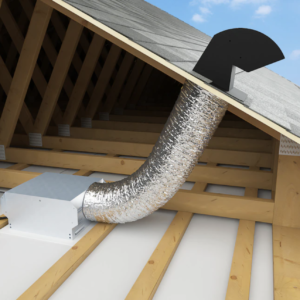
6. Exhaust Vents: Releasing Hot Air to Improve Indoor Quality
In residential roof architectures, the innate property of hot air to rise causes it to accumulate in the attic. Exhaust house roof vents serve the vital function of directing this hot air outside the house, distinct from dryer vents which usually lead through a wall. They play an instrumental role in upkeeping the air quality inside your home, expelling pollutants, dampness, and disagreeable odors. The effective use of exhaust vents enhances the overall comfort level of your home while also contributing to the longevity of the roof structure. As part of a comprehensive ventilation system, various types of exhaust vents are available, each serving a distinct role, including:
7. Ridge Vents: Top Choice for Shingle Roof Houses
Although there are alternatives for different types of roofing, ridge vents are popular for homes with shingle roofs. They are installed on the roof crest where the two slopes converge. A cap made of metal that spans the pinnacle of the roofline makes up the ridge vent. Its design allows for hot air to escape while rainwater is kept out thanks to the gap caps that were made on either side of the vent. They are a common choice in newer homes because of their length, which makes them more effective than vents that only cover a small area. The vent is covered by shingles after installation.
8. Box Vents: Simple and Affordable Ventilation for Your Home
Another type of the most popular vents in use today is box vents. To take advantage of the hot air rising concept, box vents are installed as high up on the roof as possible, right below the roof crest. Box vents consist of a box-shaped cover that encloses the roof vent holes. They have a simple, affordable, simple installation process, and no moving parts that need routine maintenance. Soffit vents and box vents work together to guarantee that air may freely flow through the roof.
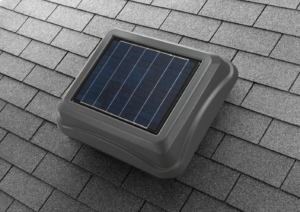
9. Turbine vents: Utilizing Wind Energy for Efficient Airflow
Propelled into action by wind energy, turbine vents use the external wind to draw hot air up from the attic and out of the house. These cost-effective vents require minimal maintenance, operate quietly even in windy conditions, and are engineered to be watertight, ensuring durability even during severe storms. Constructed from high-quality, weather-resistant materials, these long-lasting vents can function independently or in conjunction with other vents like gable or soffit vents, although their effectiveness may decrease on breeze-less hot summer days.
Numerous roof vent options are available, with solar-powered vents being particularly noteworthy. When you choose to ‘Roof With Us™’, we gift you with a complimentary solar-powered vent with the installation of your new roof. Your attic airflow system’s effectiveness relies heavily on your roof’s design, along with the local climatic conditions. Given Central Florida’s average summer temperature of around 92°, maintaining a positive airflow in your home is crucial. You can learn more about different roof ventilation options from this official link.
At Sky Light Roofing, we offer specialized assessments, reliable roofing services, free professional inspections, repairs, installations, and maintenance. Call us at 407-430-ROOF. Over a decade of service in Central Florida, we’ve made it our mission to prioritize our customers, ensuring regular updates and proper clean-ups throughout the installation process. We’re equipped and ready to attend to all types of roofs. Discover the difference when you ‘Roof With Us™’ and get in touch with us today.

